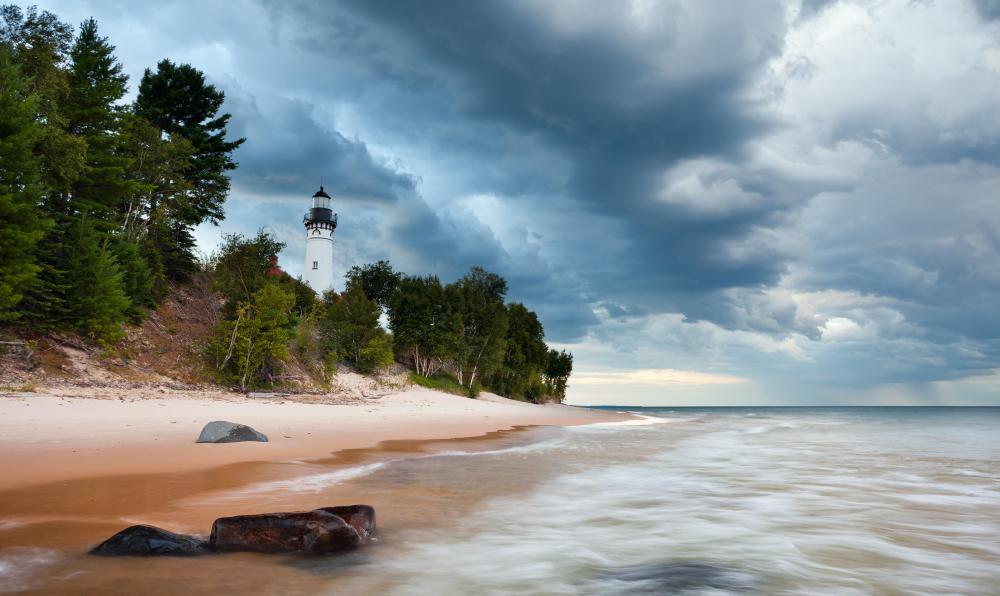At AllThingsNature, we're committed to delivering accurate, trustworthy information. Our expert-authored content is rigorously fact-checked and sourced from credible authorities. Discover how we uphold the highest standards in providing you with reliable knowledge.
What is a Ruffe?
The ruffe, whose scientific name is Gymnocephalus cernuus, is a fish of the Percidae family that is native to Europe and northern Asia. It has become a problematic invasive species in North America since it was introduced sometime in the 1980s. Efforts have been ongoing ever since to eliminate the fish from the lakes and rivers of Canada and the United States.
The ruffe is a small fish, typically growing to about 4 to 6 inches (10 to 15 cm) in length and weighing about 14 ounces (400 grams). The fish is usually brownish-gray with dark spots covering most of the body, and notable physical characteristics include its long dorsal fins that are joined together.

Eurasian ruffe prefer very cold waters, usually between 77 to 86 degrees Fahrenheit (25 to 30 degrees Celsius). The fish is usually seen in deeper waters during the daylight hours, moving to the shallower waters of lakes and rivers at night when it feeds. The fish primarily feeds on fish eggs.
No one knows exactly how this fish became an invasive species. Most likely it was released in the discharged ballast water of transoceanic ships. It first showed up in Lake Superior, but it has since been sighted in both Lake Huron and Lake Michigan. It has also been seen in surrounding rivers.
The ruffe has become a dangerous invasive species because it competes against other fish of the Great Lakes for food. Studies done by environmental agencies have found that areas with high populations of the fish have decreased populations of native fish like yellow perch and emerald shiners. Its population has been kept somewhat in check, however, by larger fish such as bullheads and smallmouth bass, which feed on the ruffe.
Both state and federal government agencies have been working to control the ruffe population before it grows to dangerous levels. Fishermen in Wisconsin are instructed to kill and freeze any ruffe they catch and report the catch to local government agencies.
Control measures to help combat the spread of the ruffe include the use of pheromones to attract and capture the fish. Alarm pheromones are also being used. These special pheromones can have an influence on the fish's behavior, stopping it from migrating to areas where it has not yet spread.
The ruffe is classified as a prohibited invasive species. It is therefore illegal to import, transport, or even possess a live one. Consequently, they are not seen in aquariums or even in fish markets.
Frequently Asked Questions
What is a Ruffe?
A Ruffe, also known as Gymnocephalus cernua, is a small freshwater fish native to Eurasia. It's recognized by its spiny dorsal fin and perch-like appearance. Ruffe typically inhabit slow-moving or still waters and are known for their adaptability to various environmental conditions, which has facilitated their spread as an invasive species in some regions.
Why is the Ruffe considered an invasive species?
The Ruffe is considered invasive in areas like the Great Lakes in North America due to its aggressive nature and rapid reproduction. It competes with native species for food and habitat, often leading to declines in local fish populations. Their introduction, often through ballast water discharge from ships, has caused significant ecological disruption.
What do Ruffe eat?
Ruffe are opportunistic feeders with a diet consisting mainly of invertebrates, such as insect larvae, crustaceans, and worms. They have also been known to consume fish eggs and small fish, which contributes to their competitive advantage over native species in invaded ecosystems.
How do Ruffe reproduce?
Ruffe reach sexual maturity quickly and can breed annually. They spawn in the spring, with females laying thousands of eggs that adhere to substrates in the water. This high reproductive rate is a key factor in their ability to establish and expand populations in non-native waters, often outcompeting local fish species.
What is being done to control Ruffe populations?
Efforts to control Ruffe populations include monitoring and managing their spread through targeted fishing, public education, and regulations to prevent further introductions. In some regions, barriers or electrical currents are used to prevent Ruffe from entering new waterways. Ongoing research aims to find more effective control methods.
How can the spread of Ruffe be prevented?
Preventing the spread of Ruffe involves stringent measures such as cleaning boats and gear before transferring them between water bodies, controlling ballast water discharge from ships, and educating anglers about the risks of using Ruffe as bait. Regulatory agencies also enforce laws designed to limit the transport and release of non-native species.
AS FEATURED ON:
AS FEATURED ON:











Discuss this Article
Post your comments